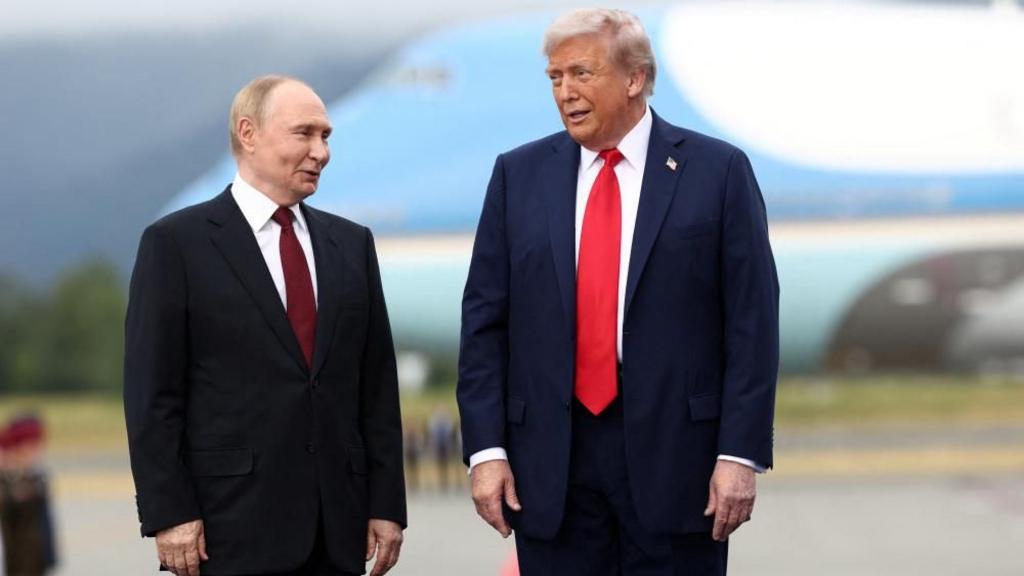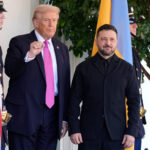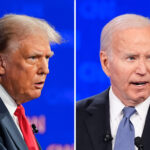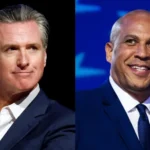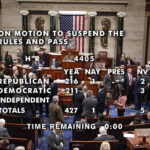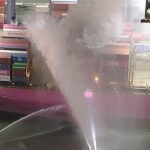Trump, Putin Begin Pivotal Alaska Summit on Ukraine Peace Deal/ Newslooks/ WASHINGTON/ J. Mansour/ Morning Edition/ Former President Donald Trump and Russian President Vladimir Putin met in Alaska to begin pivotal talks on ending the war in Ukraine. The summit could reshape global diplomacy and U.S.-Russia relations. Notably absent: Ukraine’s President Zelenskyy and key European allies.
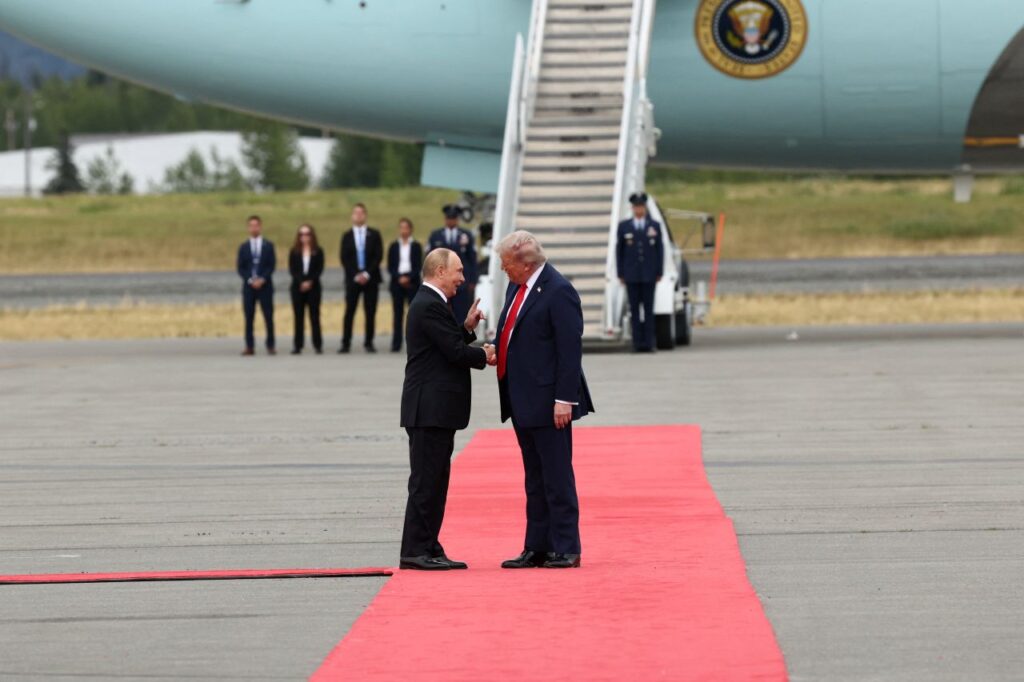
Trump-Putin Alaska Summit Quick Looks
- Trump and Putin greeted each other warmly at Joint Base Elmendorf-Richardson.
- The summit aims to discuss potential pathways to ending the Ukraine war.
- Zelenskyy and European leaders were excluded from the initial meeting.
- Military aircraft and red carpet ceremonies marked the symbolic arrival.
- The summit now involves expanded delegations from both the U.S. and Russia.
- Trump hopes to secure a peace deal; Putin wants Ukraine out of NATO.
- Critics say the summit risks sidelining Ukraine’s sovereignty.
- Alaska was chosen for security, symbolism, and Cold War history.
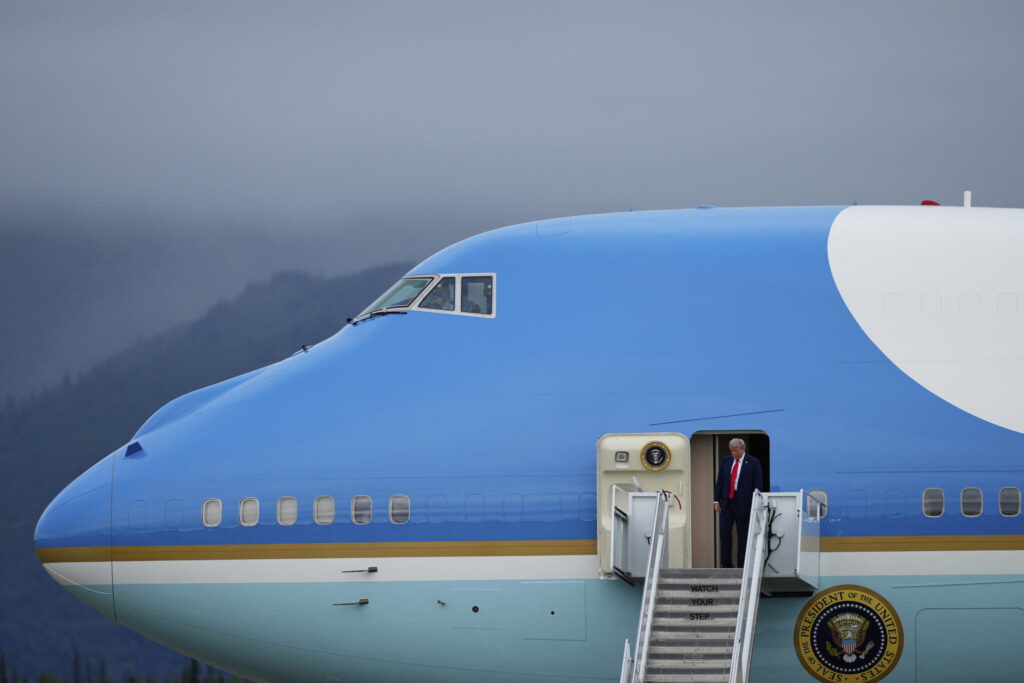
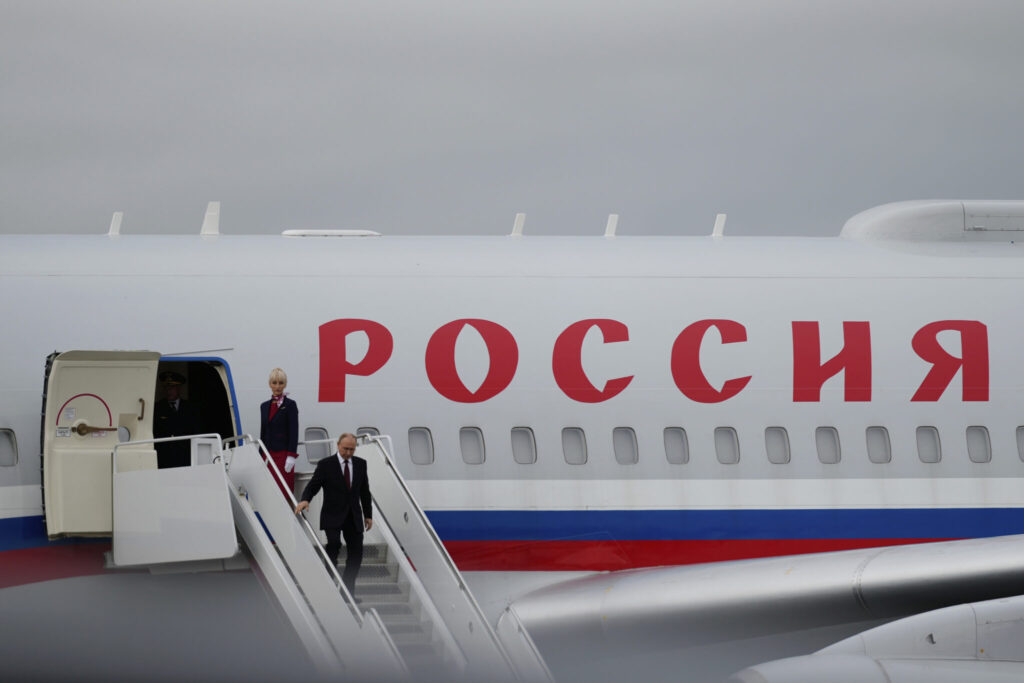
Deep Look: Trump and Putin Open Pivotal Alaska Summit on Ukraine War
JOINT BASE ELMENDORF-RICHARDSON, Alaska (AP) — U.S. President Donald Trump and Russian President Vladimir Putin met face-to-face Friday in Alaska, launching a high-stakes summit that could dramatically shift the trajectory of the war in Ukraine and redefine Washington-Moscow relations.
The meeting opened with a firm handshake on the tarmac, set against a stage adorned with “Alaska 2025” signage, flanked by fighter jets and ceremonial red carpet. Overhead, Cold War-era aircraft — B-2 bombers and F-22 Raptors — flew by in a pointed reminder of the long-standing rivalry between the two nations.
This gathering comes with immense global attention. The stakes are high: the possibility of negotiating a ceasefire, rebalancing international alliances, and potentially redrawing Ukraine’s borders — all while Kyiv and European partners are notably absent from the conversation.
Expanded Delegations Reflect Shift in Strategy
Originally planned as a private meeting, the summit was upgraded to a six-person negotiation. Trump is accompanied by Secretary of State Marco Rubio and special envoy Steve Witkoff, while Putin is joined by Foreign Minister Sergey Lavrov and foreign policy adviser Yuri Ushakov. This marks a departure from the 2018 Helsinki summit, where Trump and Putin met alone with only translators present — a move heavily criticized at the time.
A joint press conference is expected at the summit’s conclusion, though neither side has indicated whether any agreement is imminent.
Competing Agendas, Shared Ambitions
Trump’s team hopes to frame the summit as a demonstration of his negotiation prowess — a bold attempt to end the war quickly and cement his image as a global peacemaker.
Putin, on the other hand, is leveraging this rare opportunity to engage directly with the U.S. president on American soil. His goals include formalizing Russia’s territorial gains, preventing Ukraine’s accession to NATO, and slowly reasserting Moscow’s influence in Eastern Europe.
Yet the decision to exclude Ukrainian President Volodymyr Zelenskyy has alarmed Kyiv and its allies, who insist that any negotiations involving Ukraine must include Ukraine. Trump’s choice to bypass Zelenskyy, at least initially, has fueled speculation that the U.S. may compromise without Ukraine’s full consent.
Ceasefire Uncertain, Conditions Still Diverge
Despite Trump’s past claims that he could “end the war in 24 hours,” peace remains elusive. Russia and Ukraine are still deeply divided on key demands. Putin insists on a halt to Western military support and wants Ukraine to stop conscription efforts — demands Kyiv flatly rejects.
Before boarding Air Force One, Trump posted, “HIGH STAKES!!!” — an indication of the seriousness with which he views the meeting. Still, he acknowledged there was only a 25% chance of success, although he floated the idea of a follow-up three-way meeting with Zelenskyy if progress is made.
Alaska’s Strategic and Symbolic Importance
Trump has defended the summit’s Alaska setting as a respectful and neutral choice, but analysts say it sends clear signals. Located just a few miles from Russia at its narrowest point, Alaska served as a Cold War surveillance hub and remains a frontline defense zone today. The Joint Base Elmendorf-Richardson continues to monitor Russian airspace incursions.
By meeting on a military base, the leaders sidestep protest zones and heighten security. Still, the venue has raised eyebrows for its proximity to Russian territory and implications of distancing the U.S. from European partners.
Military Presence and Diplomatic Calculations
General Alexus Grynkewich, NATO’s supreme allied commander in Europe, was also dispatched to Alaska to advise Trump and Defense Secretary Pete Hegseth. His involvement may offer some reassurance to NATO members concerned about the direction of the talks and whether Trump may sideline the alliance’s consensus.
Trump indicated that he may offer Ukraine security guarantees, but “not in the form of NATO” — echoing Putin’s red line and potentially shifting the architecture of transatlantic security.
Speaking to reporters, Trump said Ukraine must ultimately decide its own fate but hinted that territorial concessions might be necessary. “I’ve got to let Ukraine make that decision,” Trump said, suggesting that Zelenskyy should consider giving up land to achieve peace.
Global Watchfulness and Uncertain Outcomes
Governments worldwide are closely watching the Trump-Putin interactions, viewing the summit as a bellwether for future U.S. foreign policy. Trump’s transactional style and skepticism of traditional alliances could lead to deals that upend longstanding geopolitical norms.
Meanwhile, Ukraine continues to resist Russia’s offensive, holding out across a vast 600-mile front. The war, now in its fourth year, has claimed tens of thousands of lives and remains a drain on resources for both sides.
Putin, before arriving in Alaska, stopped in Russia’s Far East and toured a fish oil factory — a brief and peculiar pause before diving into intense geopolitical negotiations.
As the summit continues, world leaders await any signal of progress. While the immediate outcomes may remain unclear, one fact is certain: the meeting in Alaska could mark a turning point in one of the century’s most consequential conflicts.

